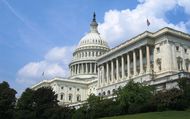Federal requirements

The passage of the Every Student Succeeds Act (ESSA), the 2015 reauthorization of ESEA, maintains the previous NCLB requirements to annually administer English Language Arts and Math tests in grades 3-8 and once in high school. A science test must also be administered once during grades 3-5, once during grades 6-8 and once in high school.
To meet federal and state requirements for testing, Washington state started using the Smarter Balanced Assessment in spring 2015 for ELA and Math, a test aligned to the Common Core State Standards. The science requirement is met by the Washington Comprehensive Assessment of Science (WCAS) administered in 5th, 8th, and 11th grade and replaces the Science MSP at grades 5 & 8 and the Biology EOC in HS.
The WA-AIM can be administered as an alternative to the SBA for students with the most significant cognitive disabilities. Eligibility for the WA-AIM is determined by a child's Individualized Education Program (IEP) team.
ESSA also mandates that states provide for an annual assessment of English proficiency of all English Language Learners. Washington's adoption of the ELPA21 starting in the 2015-16 school year will fulfill this requirement. Learn more about this test.
In addition, school districts that receive Title I federal funding to aid educationally disadvantaged students in high poverty areas must periodically participate in the National Assessment of Educational Progress (NAEP). To find out more about the NAEP, including if your school will be participating, visit OSPI's site.

